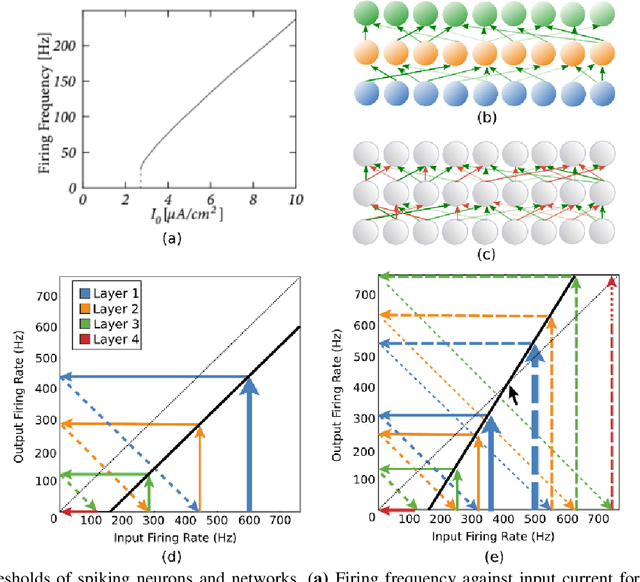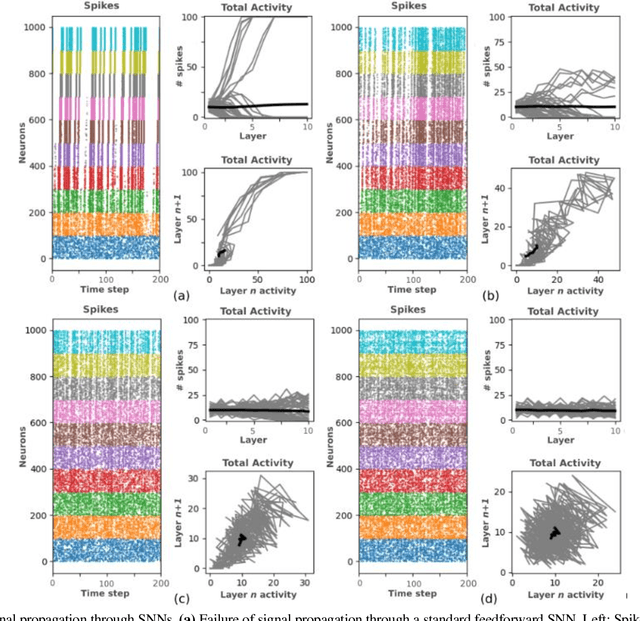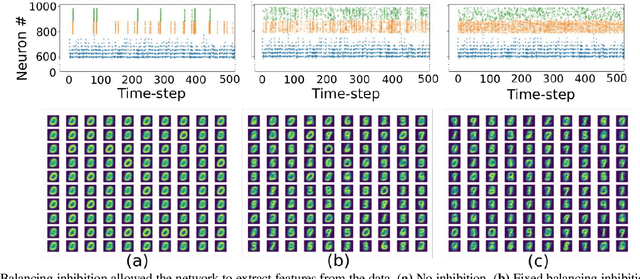Peter G. Stratton
VPRTempo: A Fast Temporally Encoded Spiking Neural Network for Visual Place Recognition
Sep 19, 2023Abstract:Spiking Neural Networks (SNNs) are at the forefront of neuromorphic computing thanks to their potential energy-efficiency, low latencies, and capacity for continual learning. While these capabilities are well suited for robotics tasks, SNNs have seen limited adaptation in this field thus far. This work introduces a SNN for Visual Place Recognition (VPR) that is both trainable within minutes and queryable in milliseconds, making it well suited for deployment on compute-constrained robotic systems. Our proposed system, VPRTempo, overcomes slow training and inference times using an abstracted SNN that trades biological realism for efficiency. VPRTempo employs a temporal code that determines the timing of a single spike based on a pixel's intensity, as opposed to prior SNNs relying on rate coding that determined the number of spikes; improving spike efficiency by over 100%. VPRTempo is trained using Spike-Timing Dependent Plasticity and a supervised delta learning rule enforcing that each output spiking neuron responds to just a single place. We evaluate our system on the Nordland and Oxford RobotCar benchmark localization datasets, which include up to 27k places. We found that VPRTempo's accuracy is comparable to prior SNNs and the popular NetVLAD place recognition algorithm, while being several orders of magnitude faster and suitable for real-time deployment -- with inference speeds over 50 Hz on CPU. VPRTempo could be integrated as a loop closure component for online SLAM on resource-constrained systems such as space and underwater robots.
Making a Spiking Net Work: Robust brain-like unsupervised machine learning
Aug 02, 2022



Abstract:The surge in interest in Artificial Intelligence (AI) over the past decade has been driven almost exclusively by advances in Artificial Neural Networks (ANNs). While ANNs set state-of-the-art performance for many previously intractable problems, they require large amounts of data and computational resources for training, and since they employ supervised learning they typically need to know the correctly labelled response for every training example, limiting their scalability for real-world domains. Spiking Neural Networks (SNNs) are an alternative to ANNs that use more brain-like artificial neurons and can use unsupervised learning to discover recognizable features in the input data without knowing correct responses. SNNs, however, struggle with dynamical stability and cannot match the accuracy of ANNs. Here we show how an SNN can overcome many of the shortcomings that have been identified in the literature, including offering a principled solution to the vanishing spike problem, to outperform all existing shallow SNNs and equal the performance of an ANN. It accomplishes this while using unsupervised learning with unlabeled data and only 1/50th of the training epochs (labelled data is used only for a final simple linear readout layer). This result makes SNNs a viable new method for fast, accurate, efficient, explainable, and re-deployable machine learning with unlabeled datasets.
 Add to Chrome
Add to Chrome Add to Firefox
Add to Firefox Add to Edge
Add to Edge